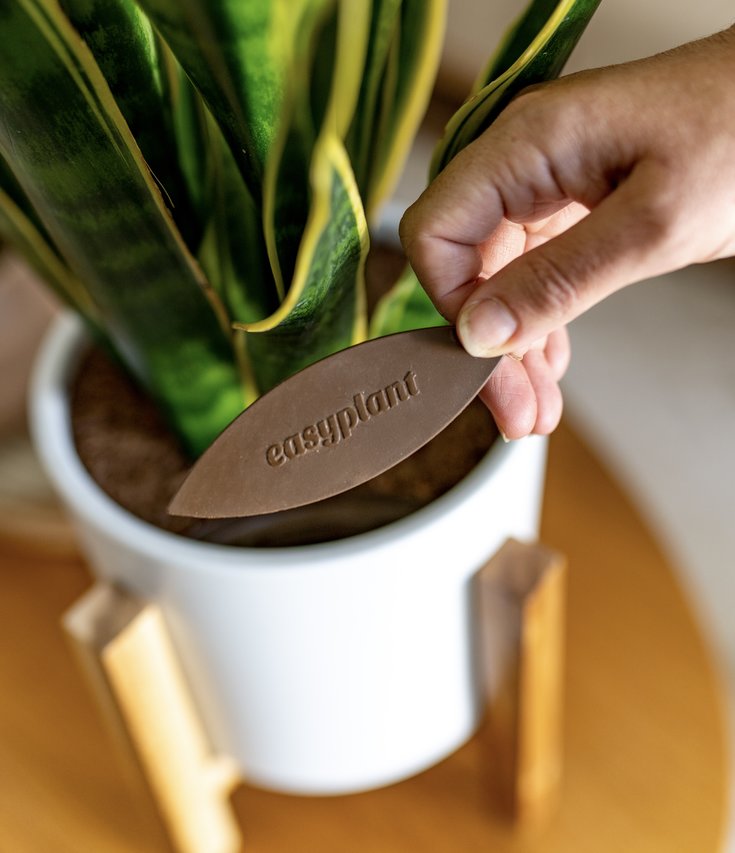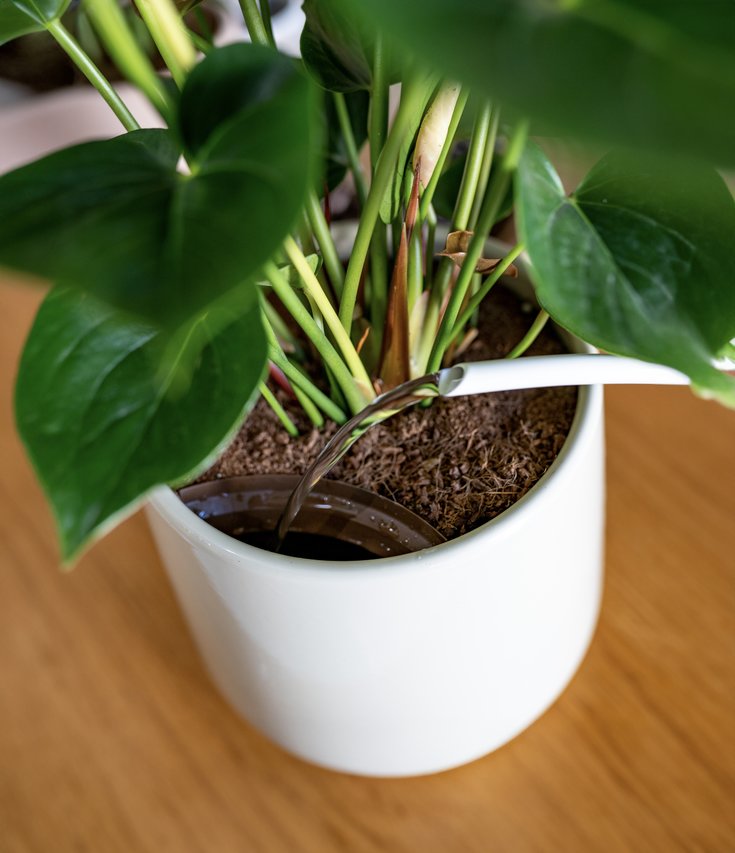How to Use easyplant’s Self-Watering Pots
Self-watering pots are an easy and efficient way to ensure your plants get the perfect amount of water without constantly monitoring them. With easyplant's Self-Watering Pots, you can enjoy lush and healthy plants effortlessly!
With an easy-to-fill reservoir and a simple-to-follow process, our self-watering pots are designed with convenience and functionality in mind. To make your journey to perfectly watered plants even easier, here is a step-by-step guide to using easyplant's Self-Watering Pots.
1. Unpack Your Easyplant
Unpacking your self-watering pot is easy! Your plant will be safely packaged pre-potted in the easyplant pot inside the box. Please handle the unboxing process with care. Once you have taken the plant out, refer to the instruction card that was included with it. This card contains details on watering, plant information, and preferred light conditions to ensure its healthy growth.
To ensure a healthy plant, check for any signs of damage to the easyplant pot, the care card included in the package, and the plant itself.

2. Open the Reservoir Lid to the Self-Watering Pot
The reservoir lid is located on the soil line of your plant's easyplant pot. Open it, and you will find a cleverly designed water reservoir to store your water and ensure that plants get just the right amount of hydration. Fill it up with fresh, lukewarm water and close the lid.
The reservoir should be filled monthly, allowing your plant to take what it needs while avoiding over-watering. The self-watering design of the easyplant pot will ensure your plant gets the right amount of water.

3. Fill the easyplant Self-Watering Pot With Lukewarm Water
Lukewarm water mimics the temperature of natural rainwater and will help to reduce the risk of shock to your plant. If your water is too hot, damage to the roots may occur. If it is too cold, your plant may experience root shock, leading to permanent root damage, leaf drop, and other potential issues.

4. Tips for When It’s Time to Refill the Reservoir
With self-watering pots like easyplant, the secret to success lies in a disciplined refill routine, not in repeatedly topping up the reservoir. The goal is to refill just once a month, as this ensures an ideal watering balance for your plants.
It's worth noting that light conditions can significantly influence a plant's water consumption. To optimize this, refer back to the light instructions provided in your plant brochure or plant care page for the best placement of your plant.
A good practice to avoid overlooking the monthly refill is to mark a specific day on your calendar for this task. On that day, confirm the reservoir is empty, and then refill it. This will ensure your plant has access to a steady supply of water for the next month.
If your plant starts to wilt or the leaves begin to turn yellow - common signs of overwatering - resist the urge to refill more frequently. Instead, reassess the light conditions your plant is in, as this could be influencing its water absorption rate.
With easyplant's Self-Watering Pots, you can ensure your plants get the hydration they need while enjoying a more straightforward and less time-consuming plant care routine.

Get a Self-Watering Plant with easyplant Today!
Self-watering pots are the perfect way to ensure that your plants get the hydration they need for healthy growth - and easyplant's Self-Watering Pots make it even easier!
Rather than worrying about a frequent watering schedule, simply ensure that your easyplant's reservoir is full once a month and check in with your plant regularly to keep it healthy and vibrant. Get your easyplant today and start enjoying perfectly watered plants.